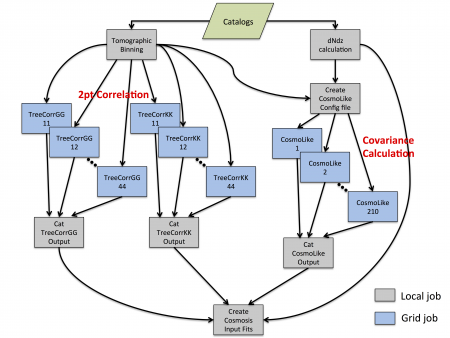One of the most exciting and challenging areas of modern cosmology is weak gravitational lensing: the phenomenon of small distortions in the shapes of background galaxies as the light they emit traverses the lumpy universe. By measuring the shapes of galaxies in a given region, cosmologists can infer the total mass along the line of sight. Carried out over large parts of the sky, this inference can shed light on the most profound mysteries in the universe, such as the nature of dark matter and dark energy.

The analyses are so complex that the process of making the measurements on petabytes of imaging data, processing the measurement outputs, applying algorithms that measure shapes of billions of galaxies, and then using that information to learn about the universe takes years of effort by large collaborations to carry out. There are four state-of-the-art surveys that have obtained interesting results. The ultimate weak lensing survey will be the Large Synoptic Survey Telescope (LSST) that will start its science operations in about 5 years. To prepare for LSST data, a team of scientists around the world has formed the Dark Energy Science Collaboration (http://lsst-desc.org/) and is developing several pipelines to analyze weak lensing data. One of these pipelines uses Pegasus as the underlying workflow engine: it gives the scientists flexibility to make quick changes; reproduce work of colleagues around the world; and automate many large scale runs. The team is applying this pipeline to all four current data sets to see if reported hints of discrepancies are real or due to different analysis techniques.
Publication: A Unified Analysis of Four Cosmic Shear Surveys :Arvix preprint
Contacts: dodelson@fnal.gov, mwang@fnal.gov